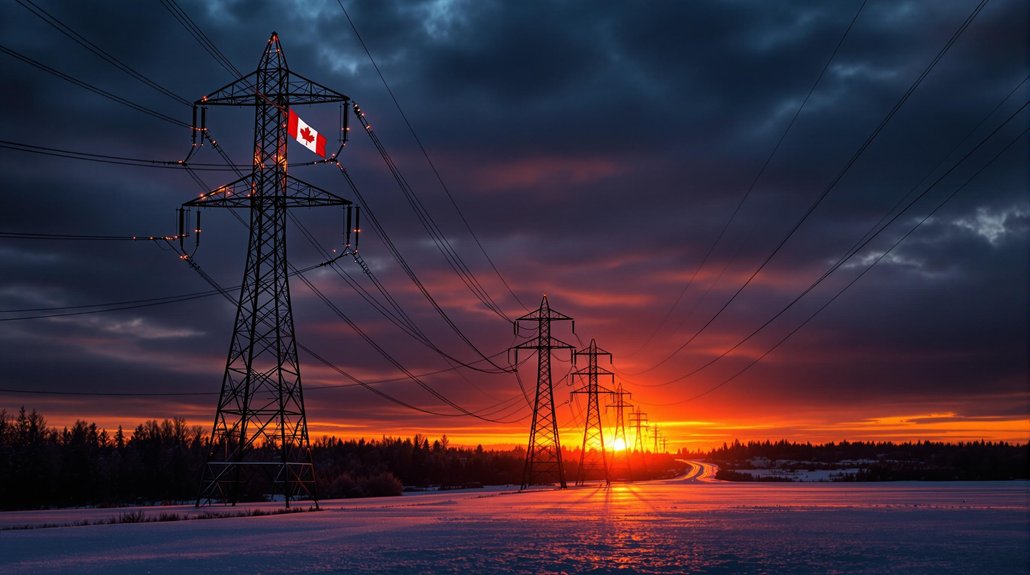Ontario’s hitting back hard. Premier Doug Ford announced a 25% surcharge on electricity exports to America starting March 2025, directly retaliating against Trump’s tariffs. Michigan, Minnesota, and New York households could pay up to $100 CAD more monthly. The power tax should generate about $400,000 CAD daily for Ontario. Grid operators are confused, politicians are finger-pointing, and Americans are bracing for higher bills. This trade war‘s just warming up.
Nearly 1.5 million Americans are about to feel a serious pinch in their wallets. Starting March 11, 2025, Ontario will slap a 25% surcharge on all electricity exports flowing south of the border. Talk about a power play.
The tax targets Michigan, Minnesota, and New York households and businesses that rely on Canadian electricity. Monthly bills could jump by about $100 CAD per household. That’s not pocket change. Minnesota might dodge the worst of it, since they don’t use much Ontario power anyway. Lucky them.
Americans in border states could see electric bills spike $100 monthly when Ontario’s power tariffs hit next year.
This isn’t just random Canadian aggression. It’s payback for Trump’s tariffs on Canadian goods. Ontario Premier Doug Ford isn’t playing around either. He’s threatening to increase the charge or—get this—cut power entirely if the trade war escalates. Because nothing says “sorry” like leaving your neighbor in the dark.
The economic math is simple: Ontario expects to rake in $300,000 to $400,000 CAD daily from this tax. That money will support Ontario workers and businesses affected by U.S. tariffs. Last year alone, Ontario sold 12 million MWh to the U.S. That’s serious juice.
President Trump claims the tax violates trade agreements. Meanwhile, Canadian PM Mark Carney stands firmly behind the retaliatory measures. Minnesota Governor Tim Walz is pointing fingers at Trump for starting the mess in the first place.
The whole situation has created regulatory chaos. Grid operators are scrambling to figure out how to collect these tariffs. The surcharge translates to approximately $7 per MWh after conversion to U.S. dollars. Premier Ford expressed his disappointment with Republicans who privately oppose Trump but won’t speak out publicly. Public Citizen is urging FERC to reject these proposals entirely. Nobody seems to know if Customs and Border Protection should be involved.
What’s next? Other Canadian provinces are eyeing similar measures. The duration of these tariffs is anybody’s guess. Negotiations could resolve everything—or things could get worse.
One thing’s certain: cross-border energy trade just got a whole lot more complicated. And expensive. Americans might want to invest in some candles. Just in case.









